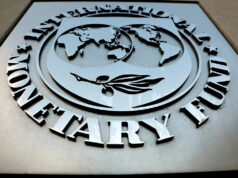THE literacy rate was estimated at 93.8% among those five years old or older, the Philippine Statistics Authority (PSA) said, citing survey results.
The PSA’s 2019 Functional Literacy, Education and Mass Media Survey (FLEMMS) returned that estimate for “basic literacy,” defined as to read and write “with understanding of simple messages in any language or dialect.”
This corresponds to around 90.8 million Filipinos out of 96.8 million who are considered to be literate on a basic level, or around six million above the age of five who cannot read or write.
Females recorded a basic literacy rate of 94.5% while males were literate at a rate of 93.2%.
Those in the 15-19 age bracket were 98.6% literate on a basic level, while those aged 5-9 had the lowest rate at 73.2%.
Metro Manila posted the highest basic literacy rate of 97.6%, while the Bangsamoro Autonomous Region in Muslim Mindanao was bottom of the table at 78.7%.
Those who had completed at a least junior high education were deemed 100% literate. The corresponding rate for those who had completed an “early childhood education” was 40.1%.
The PSA survey also returned a literacy rate of 94.4% for those that had access to electricity, against 82.1% for those with no access.
The urban-rural split in basic literacy for those with access to electricity was 95.9% to 92.5% in favor of urban households.
For those without electricity, the corresponding literacy rates were 88.3% for urban households and 79.1% for rural.
The segment of the population 10 years and over posted a basic literacy rate of 96.5% — the same rate recorded in 2013. Within this segment, the gender breakdown was 97.1% for females and 95.9% for males.
There was no discrepancy in basic literacy among the unemployed and employed aged 15 years old and older, with both at 96.1%.
Those who worked for government or in any government-owned and controlled corporation were 99.3% literate while those who worked without pay or in family-operated farms or business had the lowest rate of 91.9%.
Asian Institute of Management (AIM) Economist John Paolo R. Rivera attributed the “overall high literacy rate” to developments in the curriculum in the primary, secondary, and tertiary levels that “put weight on reading, writing, comprehension, and mathematics.”
“Teacher training in the country is also very rigorous. The efforts of Filipino educators cannot be underestimated,” Mr. Rivera said in a text message.
University of Asia and the Pacific Senior Economist Cid L. Terosa noted the unchanged basic literacy rate for those 10 years and over in 2019 from 2013 is “alarming… since one would expect the basic literacy rate to improve even minimally after six years.”
“(T)his reflects the possibility that efforts to improve proficiency in basic literacy skills (reading and writing) have not progressed or the quality of education has not pushed basic literacy higher. Also, it is possible that better access to education has not resulted in exemplary results in terms of acquiring basic literacy skills due to inadequate quality and quantity of educational facilities and teachers,” Mr. Terosa said in an e-mail.
“Some of the factors affecting the basic literacy rate in the Philippines are the inadequate public provisioning of educational services and facilities, constrained access to public education, and insufficient upskilling of teachers,” Mr. Terosa added.
Mr. Terosa expects literacy rates to drop this year as the coronavirus pandemic persists.
“The decline in real per capita incomes of many households, particularly those in the lower income classes, and glaring inequalities in access to educational technology that is apt for the current condition, are two of the most important factors that would stall or derail the quest to reach higher levels of basic and functional literacy,” he said.
AIM’s Mr. Rivera said literacy rates may be maintained assuming the satisfactory performance of blended learning programs.
“We need to make sure learning assessments and outcomes are monitored, learning materials are at par and effective,” Mr. Rivera said.
FLEMMS is conducted every five years with the latest iteration being the sixth in the series of literacy surveys that began in 1989. The 2019 survey ran from November to December 2019. — Jobo E. Hernandez



